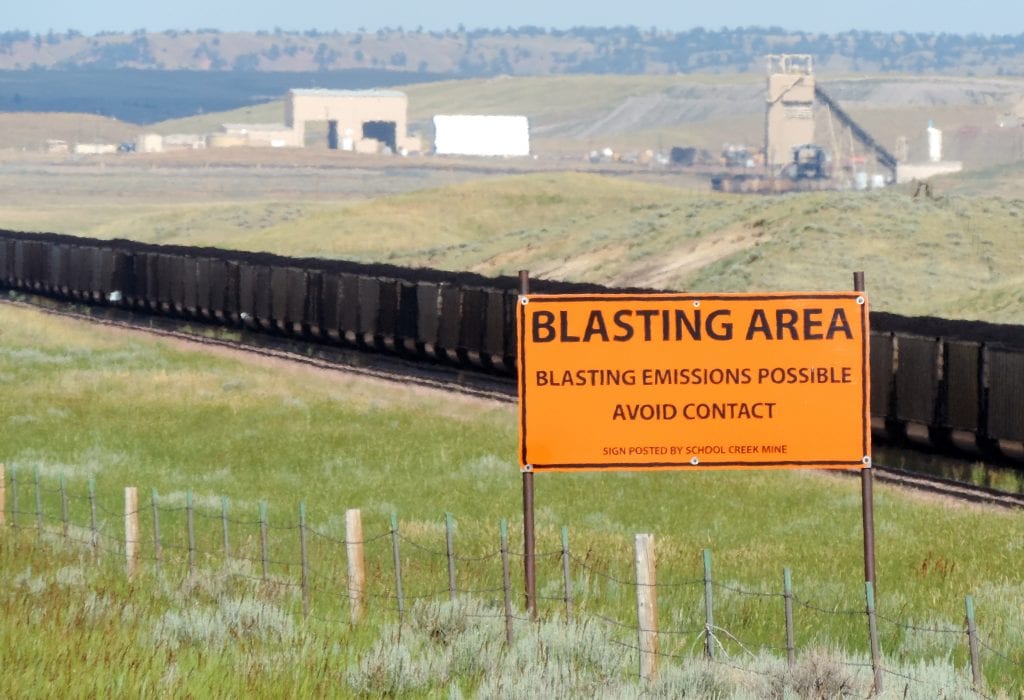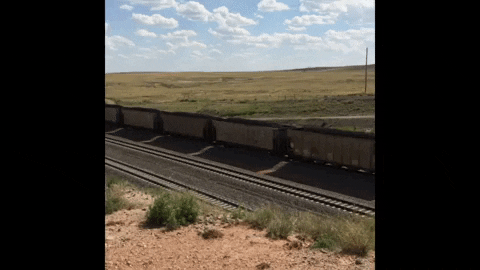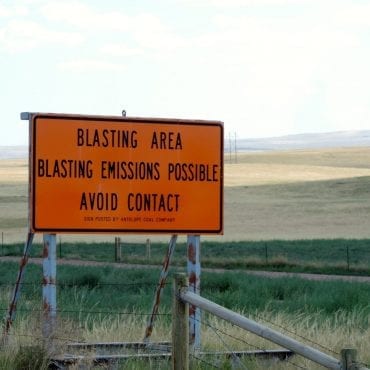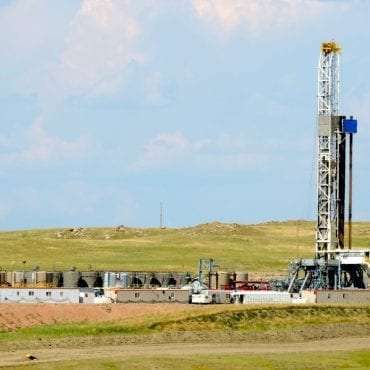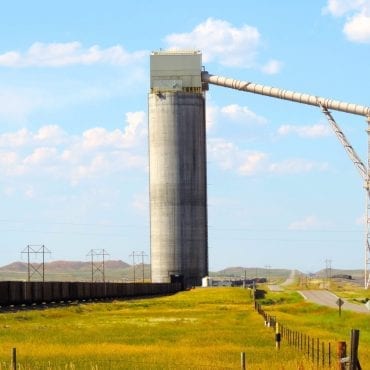
Last weekend, I had the chance to swing through the Powder River Basin of northeastern Wyoming and southeastern Montana, a region literally at the epicenter of the fossil fuel industry’s attacks on our climate.
If you haven’t heard of the Powder River Basin, let me acquaint you. The area, which covers around 24,000 square miles, is a stunning expanse of high plains in the American West. While the Powder River flows through the core of the region, other iconic streams, including the Tongue River, Cheyenne River, Belle Fourche River, and even part of the Yellowstone River also drain its rolling hills.
While not the sexiest landscape, the region contains amazing public lands, including the Thunder Basin National Grassland and parts of the Custer National Forest. It’s remarkable in that it contains some of the largest, last remaining undeveloped tracts of the Great Plains.
It’s also the present-day and historic home of many Indigenous nations, including the Crow, Northern Cheyenne, and Lakota (and technically it’s still theirs according to the Fort Laramie Treaty of 1851).
It’s also, sadly, fossil fuel central. The Powder River Basin is not only the largest coal producing region of the United States, it’s experiencing a huge increase in oil and gas production as companies tap the region’s geology using hydraulic fracturing, or fracking.
A Coal Catastrophe
On the coal side of things, what’s going on in the Powder River Basin is staggering. 43% of all coal mined in the U.S. comes from this region.
In 2016, more than 300 million tons of coal were stripped from the region’s 16 mines. That amounts to nearly 10 tons of coal per second.
More than half of that came from just two mines: Peabody’s North Antelope-Rochelle mine and Arch Coal’s Black Thunder mine.
The carbon footprint is shocking. All together, mining, transportation, and then the burning of Powder River Basin coal contributes to 10% of all U.S. greenhouse gas emissions. There is no other activity responsible for so much global warming pollution in America.
A Fracking Fiasco
At the same time the Powder River Basin is cranking out the coal, the oil and gas industry is steadily sinking its teeth into the region.
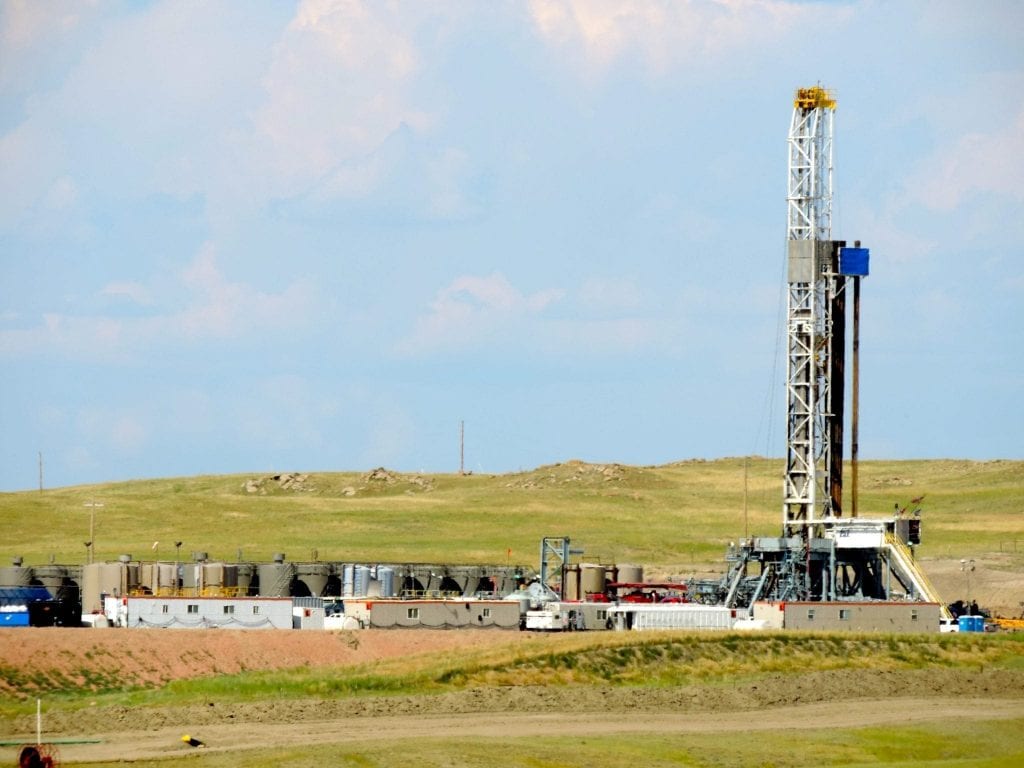
In the last few years, the pace of fracking has surged. Even as prices have sagged, drilling and production have continued to climb here.
Industry itself has gushed over the Powder River Basin, with major companies extolling its potential as a major oil producing region. According to the Wyoming Oil and Gas Conservation Commission, in 2016, more than half of all oil produced in Wyoming came from the Powder River Basin.
Oil and gas companies are even partnering with coal mines to share infrastructure, like rail facilities where million of barrels of oil can be loaded up and hauled across the country.

According to an industry source, oil and gas companies are partnering with Arch Coal to load oil trains at the company’s Black Thunder mine. Up to 43.8 million barrels of oil could be shipped from this coal mine.
The carbon pollution resulting from this explosion in fracking is also cause for concern.
Although we don’t have precise figures, we do know that most of the oil and gas produced in the Powder River Basin comes from publicly owned reserves that are managed by the U.S. Department of the Interior. With 10% of all U.S. greenhouse gas emissions linked to federal oil and gas production, this makes fracking in the Powder River Basin a contributor to another major source of global warming pollution.
Making Matters Worse
Unfortunately, even as the Powder River Basin is a root contributor to global warming in the United States, its role as a source of climate destruction seems poised to worsen.
Right now, President Trump and his Secretary of the Interior, Ryan Zinke, are considering whether to auction off more than 2.3 billion tons of publicly owned coal in the Powder River Basin of Montana and Wyoming.
This new coal leasing stands to open the door for Peabody Energy, Arch Coal, and Cloud Peak Energy to expand their massive strip mines and lock the U.S. into years of coal dependence. Worse, it threatens to flood our atmosphere with more than 3.8 billion metric tons of carbon pollution.
That’s like building 100 new coal-fired power plants and operating them for 10 years.
To top it off, Trump and Zinke are proposing to auction off nearly half a million acres of public lands for fracking in the Powder River Basin just in 2017. The move stands to open the door for more oil and gas production and more climate pollution.
We’re Cleaning Up This Mess
The upshot is, we are stepping up to thwart these new fossil fuel approvals. As we’ve written about before, WildEarth Guardians is leading the charge to confront Trump and Zinke’s plans to open up the Powder River Basin for more coal mining and more fracking.
With our climate on the line, we can’t afford to not confront new coal mining and new fracking in the Powder River Basin as aggressively and boldly as possible.
As I was visiting the Powder River Basin this last, I was overwhelmed, but also inspired. In spite of the extensive fossil fuel destruction, there are signs of life and persistence in this beleaguered landscape. Golden eagles, upland sandpipers, pronghorn, and other wildlife still persist on the remaining public lands.
If we can keep our fossil fuels in the ground in the Powder River Basin, it will not only be a boon for our climate, it will open the door for the American West and its natural glory to thrive. Check out some more pictures below and stay tuned for more action from WildEarth Guardians around the Powder River Basin.
